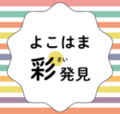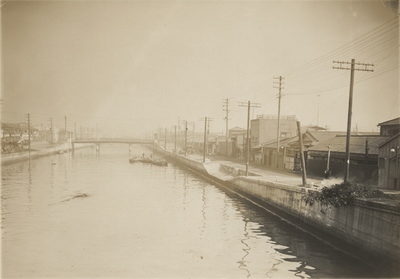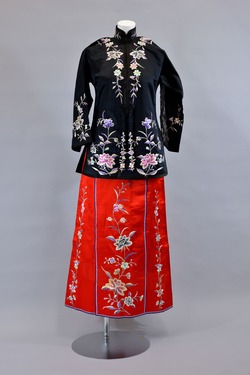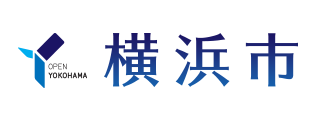- Yokohama-shi Top Page
- Municipal Government Information
- Public Relations, Public Information, News
- Public Relations and Publications
- Public Relations Printed Materials
- Public information Yokohama
- Public information Yokohama-shi version
- Discover Yokohama Aya
- "Yokohama Aya Discovery" series back number (for 2025)
Here's the text.
"Yokohama Aya Discovery" series back number (for 2025)
Last Updated February 1, 2025
Delivering back issues of "Public Relations Yokohama" serialized on the page

Yokohama with sea, port, greenery, history, region, people and various attractions. "Yokohama Aya Discovery" is a series of colors of this city. Since the January 2023 issue, it has been serialized on the "Public Relations Yokohama" page, and more detailed information has been posted on the website. Here, the past serialization of the paper (2025) is re-posted. In addition, please refer to the link in "More detailed stories" at the bottom right of each month article for the contents of the web.
The river canal in Yokohama, the city seen in the February 2025 issue photo

Shinkichi Tagawa (After completion of revetment work) Museum of Yokohama Urban History Kura (Photo by Sato)
Kazuki Matsumoto, Researcher, Museum of Yokohama Urban History
In recent years, urban rivers have been attracting attention as a hydrophilic space. In Yokohama, the promenades built on the Ookagawa River (Minami Ward and others) and the Ishizaki River (Nishi Ward) provide a place for people to relax. How did these urban rivers form in Yokohama and what kind of history did they follow? Let's take a look at the Yoshida River and Shinkichi Tagawa, which are now reclaimed and maintained as Odori Park (Naka Minami Ward).
The photo shows Nagashima Bridge in the Shinkichi Tagawa River. ※This is a photo of the 10th century. The Shinkichi Tagawa was excavated in 1896 (Meiji 29). In the Meiji era, in Yokohama, where the urban area on the Yoshidashinden side progressed, rivers were maintained and excavated, forming a river canal network along with the large Okagawa River, a natural river.
Later, the river canal in Yokohama was damaged by seawalls and bridges due to the Great Kanto Earthquake, and reconstruction work by the government and Yokohama City is underway. It is this photo that conveys the situation. The Nagashima Bridge in the center of the screen is a main pillar with a design designed for reconstruction work. ※You can check 2. The revetment has become a concrete retaining wall, and on both banks, there have been a landing site for boating. The photo shows that the river canal was used as a transportation network.
Later, the Yoshida River and Shinkichi Tagawa were reclaimed by the construction of the Municipal Subway, and the ground was constructed as Odori Park. The Nagashima Bridge also disappears, but the bridge nameplate is still preserved at Isezaki-Chojamachi Station as a relief that conveys traces of the Yoshida River and Shinkichi Tagawa.
※1 Near the middle of the current Isezaki-Chojamachi Station and Bandobashi Station ※Large and thick pillars located at both ends of the two bridges
Exhibition Living in Canals-The River Canal in Yokohama that supported the city (outside site)-(paid)
[Venue] Museum of Yokohama Urban History until Sunday, April 13
[Traffic] Get off at Nihon Odori Avenue Station in Minato Mirai Line, just walk
[Inquiry] Museum of Yokohama Urban History (external site) Tel: 045-663-2424 Fax: 045-663-2453
January 2025 issue of Yokohama-Chinatown

Around 1940 (Koto Kaikan Kurakube donated by Yokohama Museum of EurAsian Cultures Collection)
Izumi Ito, Deputy Director of Yokohama Museum of EurAsian Cultures
Yokohama is a gorgeous city where New Year comes twice. It is the New Year of the New Year and the New Year of the lunar calendar "Spring Festival". In the old days, the "New Year of the Republic of China" was introduced as one of Yokohama's annual events in Yokohama in 1913 (Daisho 2). Currently, as the "Yokohama Spring Festival", it is a major event in early spring that takes place not only in Chinatown but also throughout Yokohama. In summer, there is the Emperor's Birth, which takes place on June 24th of the lunar calendar. Guan Emperor's Birth is a festival to celebrate the birthday of Guanha, the main god of the Yokohama Kantei Mausoleum. The Yokohama Seki Imperial Mausoleum has a long history, and it began when a small shrine was created shortly after the opening of the port at the end of the Tokugawa period. Since then, overcame the Great Kanto Earthquake, the Great Yokohama Air Raid, and the fire on New Year's Day in 1986 (Showa 61), the 4th Kan Imperial Mausoleum protects the city and people.
A few minutes' walk from Chinatown, Yokohama Museum of EurAsian Cultures is a museum based on the concept of "connecting to the world in Yokohama." In addition to introducing the history and artifacts of various ethnic groups in the Eurasia region, it also introduces the diverse cultures that live in this city, unique to the international city of Yokohama. In the permanent exhibition room, the wedding costumes of overseas Chinese Yokohama, and tiles of the Han Dynasty era related to Pairo (gate) in the north, south, east, west, and north of Chinatown ※It is also on display. When you come to Yokohama-Chinatown, why not reach Yokohama Museum of EurAsian Cultures?
※Ink is applied to the roof tiles at the eaves, and the engraved pattern is copied on paper.
Yokohama Museum of EurAsian Cultures (paid)
[Traffic] Get off at Nihon Odori Avenue Station in Minato Mirai Line. Get off at Kannai Station on the JR and Municipal Subway, a 10-minute walk.
[Closed days] Monday (or the next weekday if it is a national holiday), December 28-January 3, etc.
[Inquiry] Yokohama Museum of EurAsian Cultures (external site) Tel: 045-663-2424 Fax: 045-663-2453
Inquiries to this page
Public Relations Section, City Promotion Promotion Office, Policy Management Bureau
Telephone: 045-671-2331
Telephone: 045-671-2331
Fax: 045-661-2351
Email address: ss-koho@city.yokohama.lg.jp
Page ID: 595-312-111







